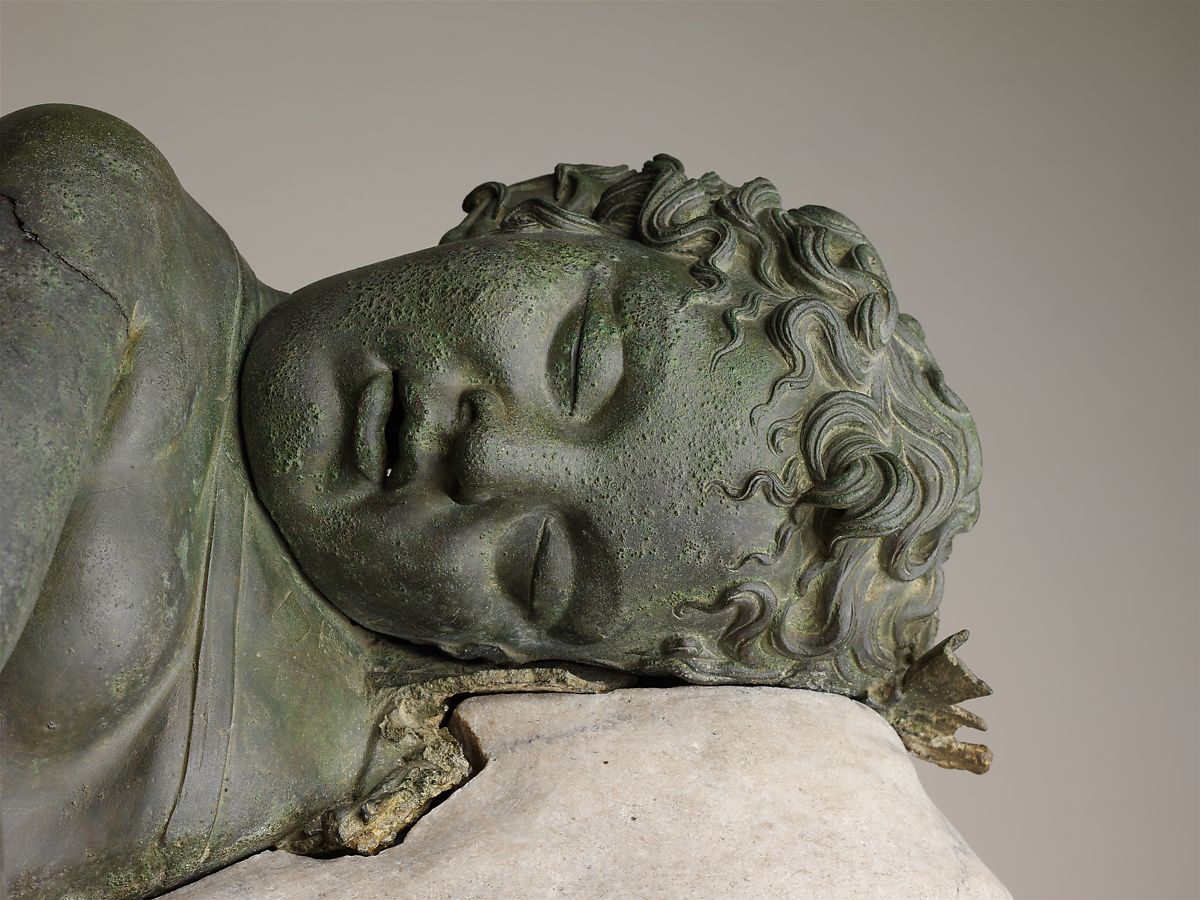
Introduction
Discover the captivating Sleeping Eros statue, a remarkable masterpiece from the classical and Hellenistic Greece period. Currently on display at the prestigious Metropolitan Museum of Arts in New York, this bronze statue is one of the few surviving examples of its kind. In this article, we delve into the historical significance of the sculpture, its journey to the museum, and even uncover an interesting tidbit about Michelangelo's involvement in a forgery scandal.
The Sleeping Eros Statue: An Extraordinary Relic from Ancient Greece
The Sleeping Eros statue, dating back to the 3rd–2nd century B.C., is a treasured artifact that offers a glimpse into the artistic brilliance of ancient Greece. Surviving in remarkably intact condition, this bronze sculpture is a rare find, as only a limited number of large-scale bronze statues from this era have endured the test of time.
The Struggles of Bronze Sculptures throughout History
Bronze statues, due to their material value, have often faced the risk of destruction and melting down over the centuries. Consequently, few well-preserved bronze sculptures have survived from classical and Hellenistic Greece. The Sleeping Eros statue is an almost flawless example that remarkably managed to evade such fate.
Rarity and Significance: The Scarcity of Ancient Greek Bronze Statues
The Sleeping Eros statue, being one of the limited number of surviving ancient Greek bronze sculptures, exemplifies the rarity and significance of these artifacts. With estimates suggesting that fewer than 200 substantial, large-scale bronze statues have endured from classical and Hellenistic Greece, their scarcity amplifies their historical and artistic value. Each surviving bronze statue offers a precious glimpse into the artistic achievements of the ancient Greeks, making the Sleeping Eros even more exceptional as one of the treasured few. As you explore this captivating masterpiece at the Metropolitan Museum of Arts, remember that you are witnessing a remarkable relic that is both rare and historically significant.
Michelangelo's Unexpected Connection
The Sleeping Eros Forgery
In a surprising twist, the Sleeping Eros statue was associated with renowned artist Michelangelo as his first attempt at forgery. At the beginning of his career, Michelangelo struggled to gain recognition, and collectors primarily sought authentic Roman statues. Seeking to make his mark, Michelangelo took a risky gamble in 1496 when he carved the Sleeping Eros and artificially aged it to resemble an ancient artifact. Unfortunately, the forgery was eventually discovered and destroyed, revealing Michelangelo's talent and audacity.
Conclusion
The Sleeping Eros statue stands as a testament to the artistic brilliance of ancient Greece and the challenges faced by bronze sculptures throughout history. Its presence in the Metropolitan Museum of Arts in New York provides a unique opportunity for visitors to admire this rare and significant artifact. Additionally, the intriguing connection between the Sleeping Eros statue and Michelangelo's forgery scandal adds an extra layer of fascination to this remarkable piece of art. When you next explore the halls of the museum, be sure not to miss Gallery 164, where you will have the chance to witness the magnificence of the Sleeping Eros statue firsthand.
Additional resources and articles:

No Comments.